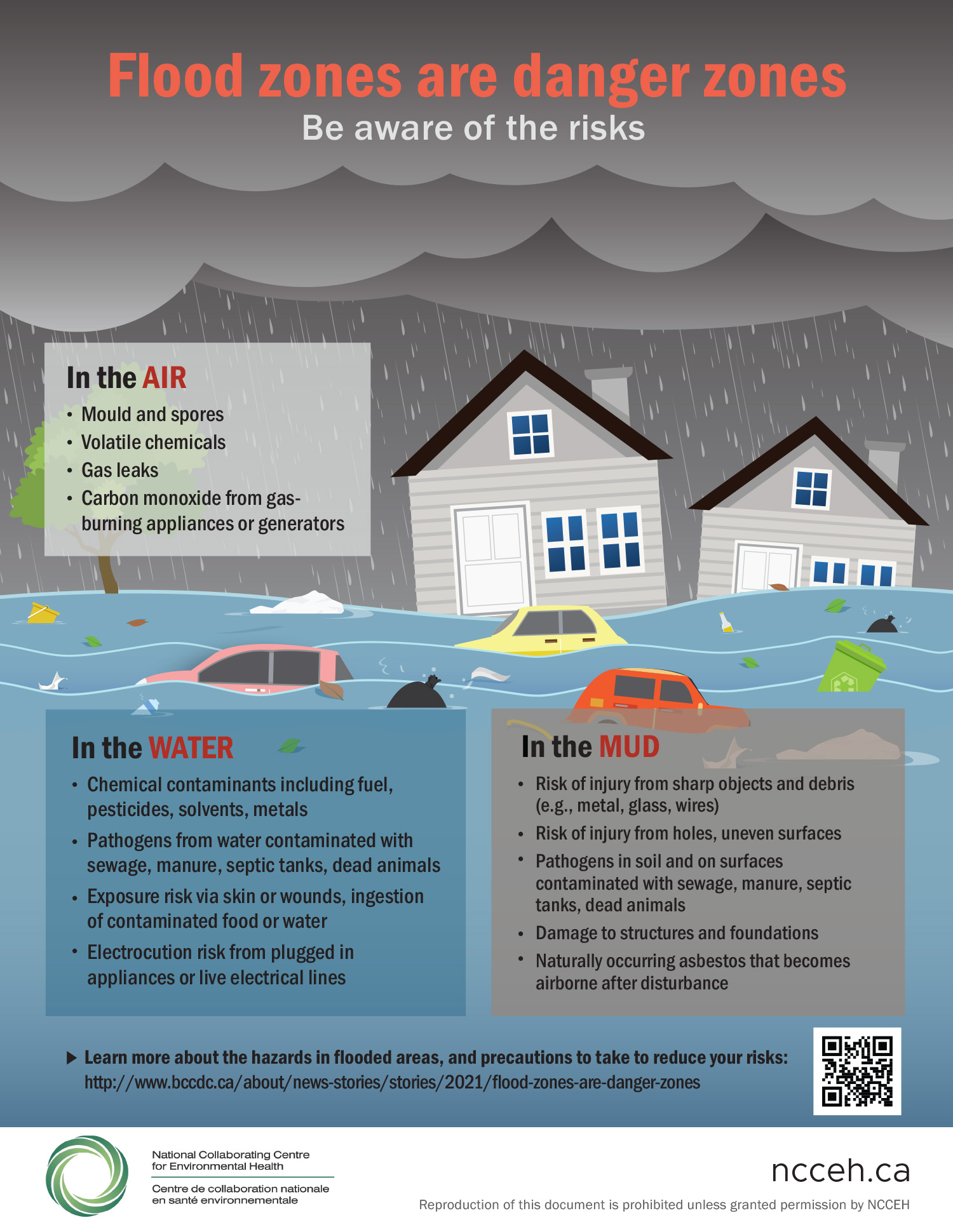Understanding Flash Floods: How To Prepare For And Respond To Flood Warnings

Table of Contents
What are Flash Floods?
Definition and Characteristics
Flash floods are rapid, sudden floods that occur within a short period, typically less than six hours. Unlike regular floods, which may take days or weeks to develop, flash floods can overwhelm communities with devastating speed and force. Contributing factors include intense or prolonged rainfall over saturated ground, dam or levee failures, and rapid snowmelt. The sheer volume of water in a short time causes devastating consequences, including property damage, loss of life, and significant disruption to infrastructure.
- Difference between flash floods and regular floods: Flash floods happen quickly, often with little warning, while regular floods develop more gradually over time.
- Typical warning times (or lack thereof): Flash flood warnings are often issued with very little lead time, sometimes only minutes before the flood begins.
- Geographic areas most susceptible to flash floods: Areas with steep slopes, mountainous terrain, and those located near rivers or streams with constricted flow are particularly vulnerable. Desert regions can also experience flash floods after sudden, intense rainfall.
- Common causes of flash floods: Heavy or prolonged rainfall, dam or levee failures, rapid snowmelt, and even exceptionally high tides in coastal areas can all trigger flash floods.
Preparing for Flash Floods
Developing a Family Emergency Plan
Creating a comprehensive family emergency plan is paramount for flash flood preparedness. This plan should detail evacuation routes, designated meeting points, and emergency contact information. Regularly reviewing and updating this plan ensures everyone in the family knows what to do in the event of a flash flood.
- Steps to create a family communication plan: Designate an out-of-state contact person who can serve as a central communication point for family members to check in. Ensure everyone has the contact information readily available.
- Identifying safe evacuation routes and alternative routes: Map out several potential evacuation routes, considering different scenarios, and ensure that everyone in the family knows these routes. Identify high ground locations as potential safe havens.
- Preparing an emergency kit: Stock an emergency kit with essential supplies including water (one gallon per person per day for at least three days), non-perishable food, first-aid supplies, medications, flashlights, batteries, a portable radio, and important documents in waterproof containers.
- Knowing your flood risk – checking FEMA flood maps: Visit the FEMA website (FloodSmart.gov) to determine your flood risk and consider purchasing flood insurance, even if you're not in a high-risk area.
Recognizing and Responding to Flood Warnings
Understanding Warning Systems
Staying informed is critical. Utilize various warning systems to receive timely alerts. These include weather alerts from the National Weather Service (NWS), local news broadcasts, weather apps, and emergency sirens. Understanding the different warning levels is crucial for appropriate response.
- How to interpret different warning levels (watch, warning, advisory): A watch means conditions are favorable for flash flooding. A warning indicates flash flooding is imminent or already occurring. An advisory suggests that flash flooding is possible.
- Sources of reliable flood warnings: The National Weather Service (NWS) is the primary source of reliable flood warnings. Also, rely on your local authorities and emergency management agencies.
- Understanding the meaning of "Turn Around, Don't Drown": Never attempt to drive or walk through floodwaters. Even a small amount of moving water can sweep you off your feet.
- Importance of heeding evacuation orders immediately: Evacuation orders should be obeyed promptly. Delaying can be life-threatening.
Safety Measures During and After a Flash Flood
Actions to Take During a Flash Flood
If a flash flood occurs, your immediate priority is personal safety.
- Seeking higher ground immediately: Move to higher ground quickly and avoid low-lying areas prone to flooding.
- Avoiding floodwaters (even shallow water can be dangerous): Floodwaters are often contaminated with sewage, chemicals, and debris, posing serious health risks. Never drive or walk through them.
- Never driving through flooded areas: The depth of the water can be deceiving, and currents can easily sweep vehicles away.
- Turning off utilities if safe to do so: Turn off electricity, gas, and water if it is safe to do so, to prevent further damage or hazards.
Post-Flood Actions
After the floodwaters recede, take necessary precautions for safety and recovery.
- Checking for damage to your home and property: Assess the damage to your property carefully. Take photos to document the damage for insurance claims.
- Avoiding contact with floodwaters due to contamination: Floodwaters are often contaminated and pose risks of infection and disease. Wear protective gear if you need to enter flood-affected areas.
- Reporting damage to appropriate authorities: Report any damage to your local authorities and emergency management agency.
- Contacting your insurance company: Contact your insurance company to report flood damage and initiate the claims process.
Conclusion
Flash floods are dangerous and unpredictable events. Preparedness is key to minimizing risks. By developing a family emergency plan, understanding warning systems, and taking appropriate safety precautions, you can significantly reduce the impact of flash floods. Don't wait for a flash flood warning; start planning your flash flood preparedness strategy today! Learn more about flash flood safety and protect your family.

Featured Posts
-
 Jazda Probna Porsche Cayenne Gts Coupe Plusy I Minusy
May 25, 2025
Jazda Probna Porsche Cayenne Gts Coupe Plusy I Minusy
May 25, 2025 -
 Boosting Collaboration Bangladeshs Strategic Return To Europe
May 25, 2025
Boosting Collaboration Bangladeshs Strategic Return To Europe
May 25, 2025 -
 Bbc Radio 1s Big Weekend Lineup Featuring Jorja Smith Biffy Clyro Blossoms
May 25, 2025
Bbc Radio 1s Big Weekend Lineup Featuring Jorja Smith Biffy Clyro Blossoms
May 25, 2025 -
 Teenager Arrested After Darwin Shop Owners Fatal Stabbing In Nightcliff
May 25, 2025
Teenager Arrested After Darwin Shop Owners Fatal Stabbing In Nightcliff
May 25, 2025 -
 Snl Afterparty Lady Gagas Romantic Arrival With Michael Polansky
May 25, 2025
Snl Afterparty Lady Gagas Romantic Arrival With Michael Polansky
May 25, 2025
Latest Posts
-
 Real Madrid De Sok Doert Yildiza Sorusturma Acildi
May 25, 2025
Real Madrid De Sok Doert Yildiza Sorusturma Acildi
May 25, 2025 -
 Atletico Madrid In Espanyol A Yenilgisinde Hakemin Rolue Takla Ve Tartismalar
May 25, 2025
Atletico Madrid In Espanyol A Yenilgisinde Hakemin Rolue Takla Ve Tartismalar
May 25, 2025 -
 Futbol Duenyasinda Sok O Kuluep Ve Doert Oyuncusuna Sorusturma
May 25, 2025
Futbol Duenyasinda Sok O Kuluep Ve Doert Oyuncusuna Sorusturma
May 25, 2025 -
 Uefa Dan Real Madrid E Sok Sorusturma Arda Gueler In Takim Arkadaslari Hedefte
May 25, 2025
Uefa Dan Real Madrid E Sok Sorusturma Arda Gueler In Takim Arkadaslari Hedefte
May 25, 2025 -
 Sorusturma Real Madrid In Doert Yildizi Tehlikede
May 25, 2025
Sorusturma Real Madrid In Doert Yildizi Tehlikede
May 25, 2025
